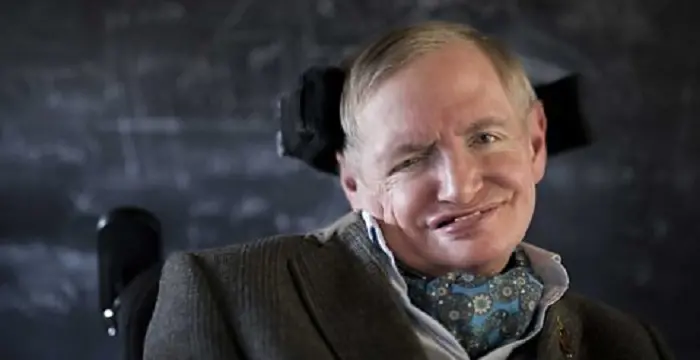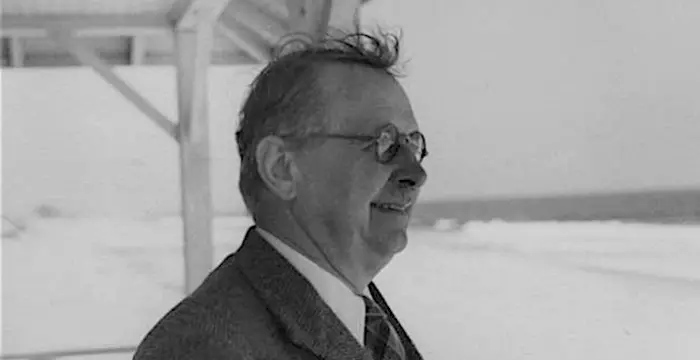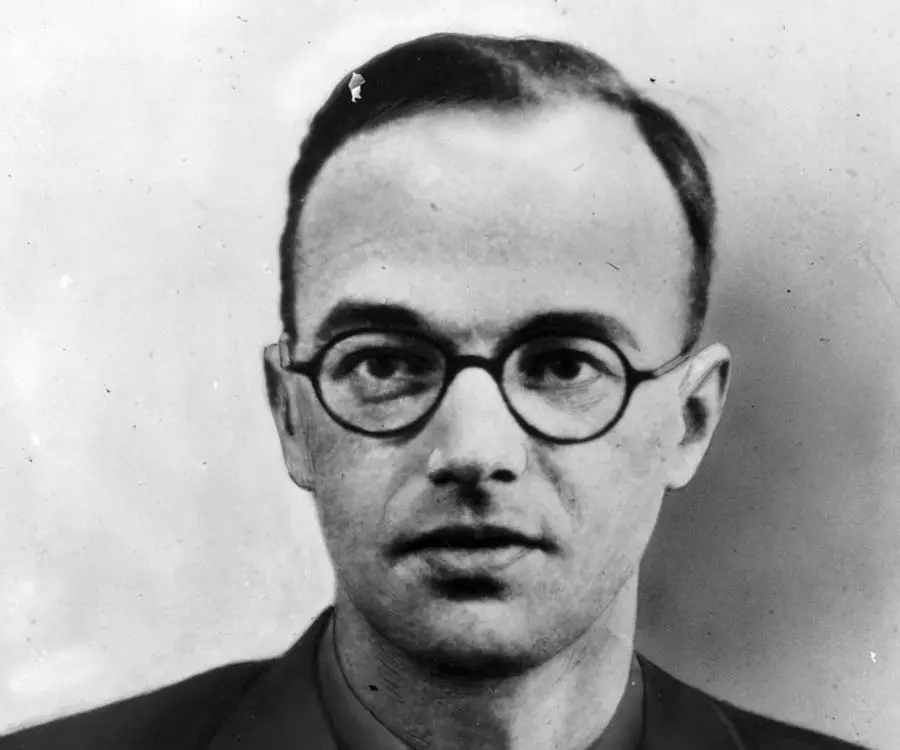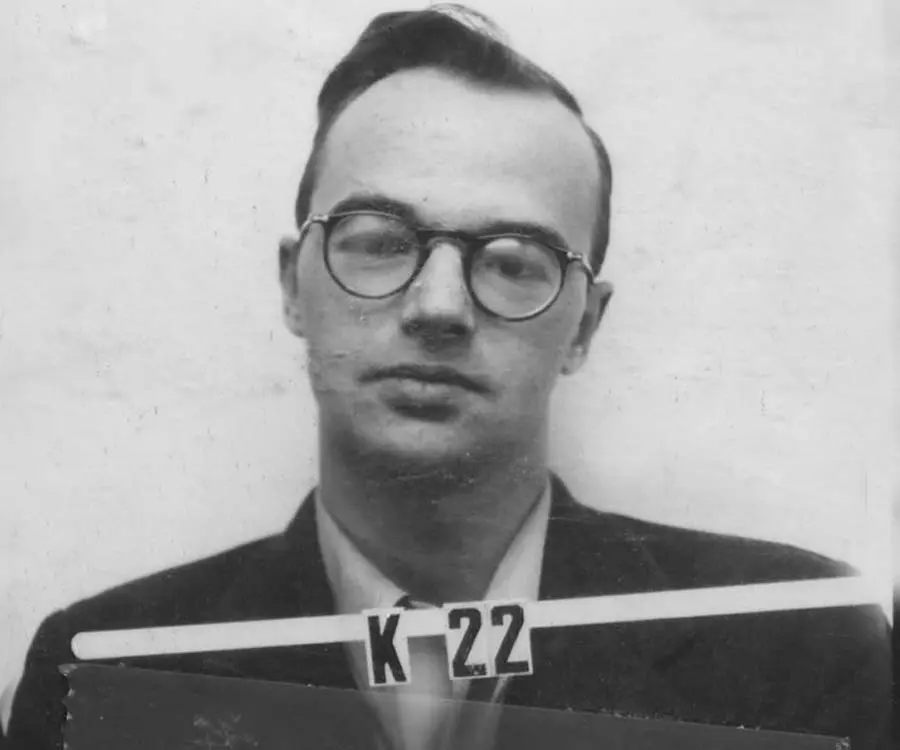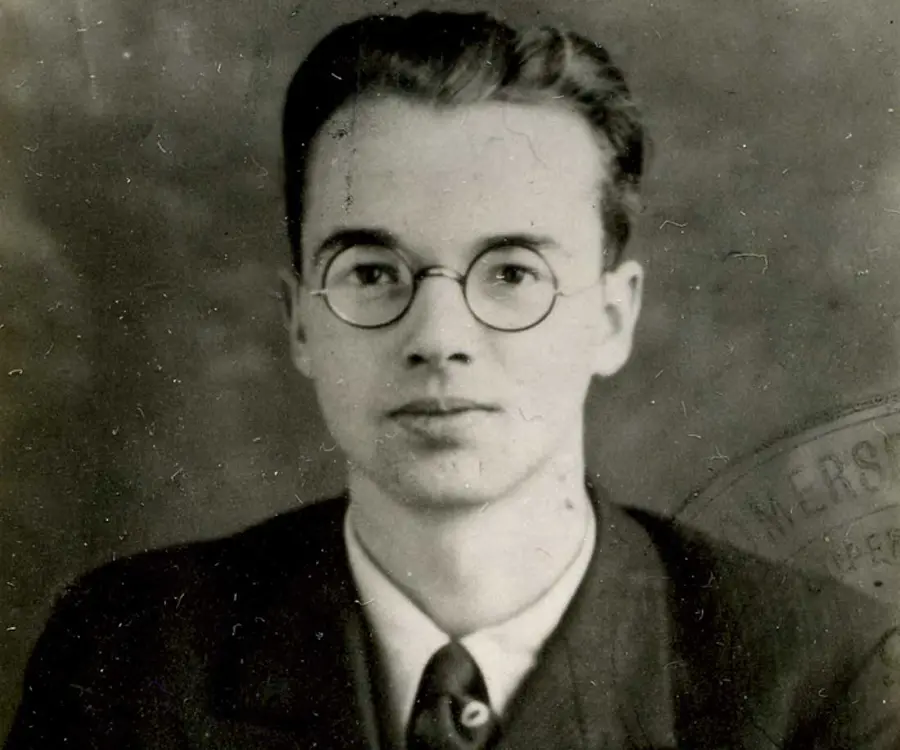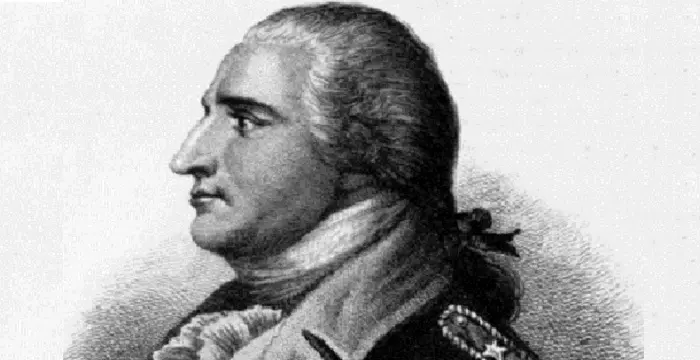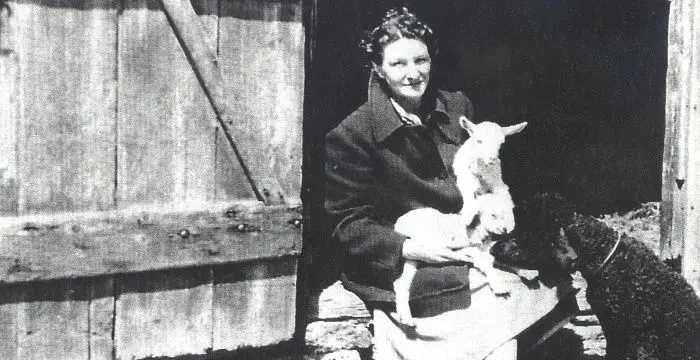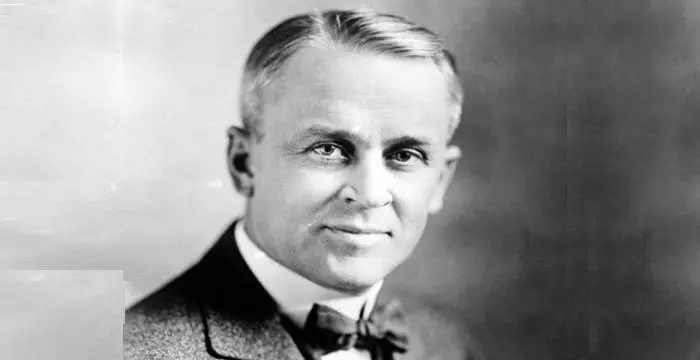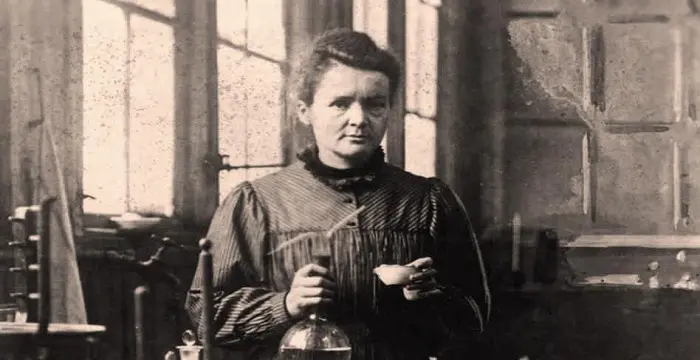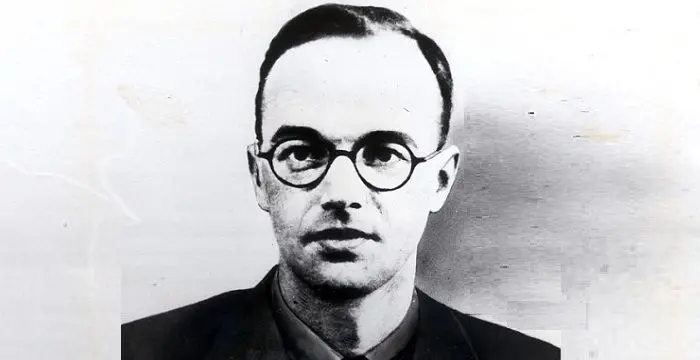
Klaus Fuchs - Atomic Spy, Birthday and Childhood
Klaus Fuchs's Personal Details
Emil Julius Klaus Fuchs was a German theoretical physicist and an atomic spy who provided valuable information to the Soviet Union
| Information | Detail |
|---|---|
| Birthday | December 29, 1911 |
| Died on | January 28, 1988 |
| Nationality | German |
| Famous | Columbia University, University Of Bristol, University Of Edinburgh, Physicists, Miscellaneous, Spies, Atomic Spy, Theoretical Physicist |
| Spouses | Grete Keilson (1959–1988) |
| Known as | Klaus Emil Julius Fuchs |
| Universities |
|
| Notable Alumnis |
|
| Birth Place | Rüsselsheim, German Empire |
| Gender | Male |
| Sun Sign | Capricorn |
| Born in | Rüsselsheim, German Empire |
| Famous as | Theoretical Physicist and Atomic Spy |
| Died at Age | 76 |
// Famous Theoretical Physicist
Stephen Hawking
Stephen Hawking was an English theoretical physicist, cosmologist and author. This biography offers detailed information about his childhood, career, life, achievements, trivia and timeline.
Abdus Salam
Abdus Salam was a renowned scientist who belonged to Pakistan. Salam was the first and only recipient of the ‘Nobel Prize’ from his country. This biography provides detailed information about her childhood, life, achievements, works & timeline.
Hermann Klaus Hugo Weyl
Hermann K. H. Weyl was a renowned German mathematician. Check out this biography to know about his childhood, family life, achievements and other facts related to his life.
Klaus Fuchs's photo
Who is Klaus Fuchs?
Emil Julius Klaus Fuchs was a German theoretical physicist and one of the most effective atomic spies of the Soviet Union. He transferred crucial information from the British, American and Canadian ‘Manhattan Project’ to the Soviet Union during the Second World War and thereafter. He was inducted as assistant of Rudolf Peierls in the atomic bomb project of Britain, the ‘Tube Alloys’. There he started spying for the Soviet Union and through Ruth Kuczynski passed on significant project information. He accompanied Rudolf Peierls to New York and worked on the ‘Manhattan Project’ at the ‘Columbia University’. Here in ‘Los Alamos National Laboratory’ he worked at the ‘Theoretical Physics Division’. He was involved in several important theoretical calculations associated with first nuclear weapons and hydrogen bomb. Post war, he served as the head of the ‘Theoretical Physics Division’ in the ‘Atomic Energy Research Establishment’ in Harwell, UK. He was later convicted for his espionage that he confessed and was sentenced to an imprisonment of fourteen years. His British citizenship was terminated. After nine years of confinement he was released and sent to East Germany. He was elected to the central committee of the ‘Socialist Unity Party of Germany’. Later he served the ‘Institute for Nuclear Research in Rossendorf’ as its deputy director. He is the recipient of ‘Order of Karl Marx’, the ‘National Prize of East Germany’ and the ‘Patriotic Order of Merit’.
Childhood & Early Life
He was born on December 29, 1911, in Rüsselsheim, Grand Duchy of Hesse in the family of Emil Fuchs and Else Wagner as one of their two sons among four children. His father was a clergyman.
After his family shifted to Eisenach he joined gymnasium and undertook the Abitur exam.
His father, who was a member of the ‘Social Democratic Party of Germany’ (SPD) since 1912, became a professor of theology at the ‘University of Leipzig’. From 1930 he attended the university and studied mathematics and physics. There he joined the student’s wing of SPD and took part in students politics. He also joined SPD’s paramilitary organisation, the ‘Reichsbanner Schwarz-Rot-Gold’.
When his father joined the ‘Pedagogical Academy’ in Kiel as a professor of religion, he moved to the ‘University of Kiel’.
His mother Else Wagner committed suicide in October 1931 by consuming hydrochloric acid.
In 1932 following his expulsion from the ‘SPD’ he and all his siblings became members of the ‘Communist Party of Germany’ (KPD). Klaus Fuchs and his elder brother Gerhard would often speak vigorously at public gatherings. They would also disturb meetings and gatherings of the ‘National Socialist German Workers' Party’ (NSDAP) whose presidential candidate for the March 1932 election was Adolf Hitler. During one such disruption he was thrashed up and hurled in the river.
He left Kiel and went to Berlin after the Nazis came to power and Adolf Hitler became Germany’s Chancellor in January 1933.
After the Reichstag building in Berlin met with an arson attack on February 27, 1933, he remained undercover for five months, as he correctly considered that the accusation of the incident would fall on opposition parties.
He later escaped to Britain in September 1933 and in October that year he was ousted from the ‘Kaiser Wilhelm Institute for Physics’.
He was inducted as research assistant of Nevill Mott, physics professor of the ‘University of Bristol’ and under Mott’s supervision he earned his PhD in physics in 1937. With the aid of Mott, he became a research assistant of another German refugee Max Born at the ‘University of Edinburg’ and eventually earned ‘Doctorate in Science’.
During this time his family faced atrocities of the Nazi government including arrests of the family members at different points of time.
Career
In August 1939 he applied for a British citizenship but following outset of the Second World War in September 1939, Klaus Fuchs was interned by the police on the Isle of Man in mid-1940.
In July 1940 he was moved to a confinement camp in Sherbrooke, Quebec, Canada. Max Born intervened for his release and by early 1941 he came back to Edinburg.
He received a proposal from Rudolf Peierls of the ‘University of Birmingham’ in May 1941 to assist the later in the atomic bomb project of Britain called the ‘Tube Alloys’.
On August 7, 1942 he became a British citizen and signed a declaration form under the ‘Official Secrets Act’. Klaus Fuchs started staying with Rudolf Peierls and his wife Genia.
Realising the significance of the scientific work, he approached Jurgen Kuczynski, teacher of the ‘London School of Economic’ who introduced him to Simon Davidovitch Kremer. Kremer whose codename was ‘Alexander’ was the secretary to the military attaché at the embassy of the Soviet Union who served the foreign military intelligence directorate of the ‘Red Army’, the ‘Glavnoye razvedyvatel'noye upravleniye’ (GRU).
He passed on vital information to the Soviet Union through Ruth Kuczynski, who by that time was an experienced Soviet agent. Her codename was ‘Sonia’.
He accompanied Rudolf Peierls to New York at the ‘Columbia University’ to work on the ‘Manhattan Project’. By that time his codename was ‘Rest’. As he moved to the US, the civilian intelligence organisation of Soviet Union, ‘NKGB’ took over the control that was vested upon him in Britain.
From May 1944 his codename changed to ‘Charles’. From August that year he began to work under Hans Bethe at the ‘Los Alamos National Laboratory’ in its ‘Theoretical Physics Division’. He was involved in several important theoretical calculations that Edward Teller refused to perform due to the latter’s disinterest.
His technique known as the ‘Fuchs-Nordheim’ is still in use while his blast waves report is still commendable. A patent was filed by him and John von Neumann that illustrate a procedure to eventuate a synthesis in a thermonuclear weapon with an implosion trigger.
By that time his prime courier was Harry Gold whose codename was ‘Raymond’. The agent first contacted him in early 1944. Klaus Fuchs passed on the knowledge he acquired regarding the theory and design of the bomb to the Soviet Union.
On July 16, 1945 he was present at the ‘Trinity Test’ among many scientists of Los Alamos.
Though transfer of nuclear research information in absence of any specific official authority was impeded by the US through its Atomic Energy Act of 1946, he passed on several crucial data to the Soviet Union and Britain.
Post war he returned to Britain in August 1946 at the behest of the British who wanted to involve him in their nuclear weapons program. He joined Harwell’s ‘Atomic Energy Research Establishment’ as head of its ‘Theoretical Physics Division’.
He passed on several important data to Soviet spy Alexander Feklisov during late 1947 to May 1949 including that on development of hydrogen bomb and production of uranium-235.
In 1947 he took part in a conference of the ‘Combined Policy Committee’ that was formed to expedite confidential atomic data exchange among governments of Britain, Canada and the US.
The ‘Venona’ project undertaken by the ‘United States Army Signal Intelligence Service’ as a counter-intelligence program pointed out to the ‘GCHQ’ around September 1949 that Klaus Fuchs was a spy.
Though initially he dismissed such allegation when he was informally interrogated by William Skardon, an MI5 officer, in December 1949, he confessed being a spy to William Skardon in January 1950 in an interview arranged by him.
Through his testimony, the American and British intelligence agencies were able to implicate another spy, Harry Gold.
On March 1, 1950 he was given the maximum sentence given for espionage, imprisonment for fourteen years, by Lord Goddard. His British citizenship was also terminated in December that year.
After nine years confinement, on June 23, 1959, he was released and sent to Dresden in East Germany. Thereafter he resumed his scientific works.
He served as a member of the SED central committee and the ‘Academy of Sciences’. He was inducted at the ‘Institute for Nuclear Research in Rossendorf’ as its deputy director, a position he held till 1979.
Personal Life & Legacy
In 1959, he married his long-time friend Grete (Margarete) Keilson, a German politician and a member of KPD.
On January 28, 1988 he passed away and his remains were interred in the ‘Friedrichsfelde Cemetery’ in Berlin.
// Famous Spies
Nathan Hale
Nathan Hale was an American patriot and martyr who fought for the Continental Army during the American War of Independence. This biography explores his childhood, early life, career, achievements, personal life, legacy and timeline.
Hiroo Onoda
Hiroo Onoda was an Imperial Japanese Army intelligence officer. Check out this biography to know about his childhood, family life, achievements and fun facts about him.
Virginia Hall
Virginia Hall Goillot was an American spy and most wanted by the ‘Geheime Staatspolizei’ (Gestapo), the official secret police of Nazis. This biography of Hall profiles her childhood, life, career, achievements and timeline.
Klaus Fuchs biography timelines
- // 29th Dec 1911He was born on December 29, 1911, in Rüsselsheim, Grand Duchy of Hesse in the family of Emil Fuchs and Else Wagner as one of their two sons among four children. His father was a clergyman.
- // 1912 To 1930His father, who was a member of the ‘Social Democratic Party of Germany’ (SPD) since 1912, became a professor of theology at the ‘University of Leipzig’. From 1930 he attended the university and studied mathematics and physics. There he joined the student’s wing of SPD and took part in students politics. He also joined SPD’s paramilitary organisation, the ‘Reichsbanner Schwarz-Rot-Gold’.
- // Oct 1931His mother Else Wagner committed suicide in October 1931 by consuming hydrochloric acid.
- // Mar 1932In 1932 following his expulsion from the ‘SPD’ he and all his siblings became members of the ‘Communist Party of Germany’ (KPD). Klaus Fuchs and his elder brother Gerhard would often speak vigorously at public gatherings. They would also disturb meetings and gatherings of the ‘National Socialist German Workers' Party’ (NSDAP) whose presidential candidate for the March 1932 election was Adolf Hitler. During one such disruption he was thrashed up and hurled in the river.
- // Jan 1933He left Kiel and went to Berlin after the Nazis came to power and Adolf Hitler became Germany’s Chancellor in January 1933.
- // 27th Feb 1933After the Reichstag building in Berlin met with an arson attack on February 27, 1933, he remained undercover for five months, as he correctly considered that the accusation of the incident would fall on opposition parties.
- // Sep 1933He later escaped to Britain in September 1933 and in October that year he was ousted from the ‘Kaiser Wilhelm Institute for Physics’.
- // 1937He was inducted as research assistant of Nevill Mott, physics professor of the ‘University of Bristol’ and under Mott’s supervision he earned his PhD in physics in 1937. With the aid of Mott, he became a research assistant of another German refugee Max Born at the ‘University of Edinburg’ and eventually earned ‘Doctorate in Science’.
- // Jul 1940 To 1941In July 1940 he was moved to a confinement camp in Sherbrooke, Quebec, Canada. Max Born intervened for his release and by early 1941 he came back to Edinburg.
- // May 1941He received a proposal from Rudolf Peierls of the ‘University of Birmingham’ in May 1941 to assist the later in the atomic bomb project of Britain called the ‘Tube Alloys’.
- // 7th Aug 1942On August 7, 1942 he became a British citizen and signed a declaration form under the ‘Official Secrets Act’. Klaus Fuchs started staying with Rudolf Peierls and his wife Genia.
- // 1944By that time his prime courier was Harry Gold whose codename was ‘Raymond’. The agent first contacted him in early 1944. Klaus Fuchs passed on the knowledge he acquired regarding the theory and design of the bomb to the Soviet Union.
- // May 1944From May 1944 his codename changed to ‘Charles’. From August that year he began to work under Hans Bethe at the ‘Los Alamos National Laboratory’ in its ‘Theoretical Physics Division’. He was involved in several important theoretical calculations that Edward Teller refused to perform due to the latter’s disinterest.
- // 16th Jul 1945On July 16, 1945 he was present at the ‘Trinity Test’ among many scientists of Los Alamos.
- // 1946Though transfer of nuclear research information in absence of any specific official authority was impeded by the US through its Atomic Energy Act of 1946, he passed on several crucial data to the Soviet Union and Britain.
- // Aug 1946Post war he returned to Britain in August 1946 at the behest of the British who wanted to involve him in their nuclear weapons program. He joined Harwell’s ‘Atomic Energy Research Establishment’ as head of its ‘Theoretical Physics Division’.
- // 1947 To May 1949He passed on several important data to Soviet spy Alexander Feklisov during late 1947 to May 1949 including that on development of hydrogen bomb and production of uranium-235.
- // 1947In 1947 he took part in a conference of the ‘Combined Policy Committee’ that was formed to expedite confidential atomic data exchange among governments of Britain, Canada and the US.
- // Sep 1949The ‘Venona’ project undertaken by the ‘United States Army Signal Intelligence Service’ as a counter-intelligence program pointed out to the ‘GCHQ’ around September 1949 that Klaus Fuchs was a spy.
- // Dec 1949 To Jan 1950Though initially he dismissed such allegation when he was informally interrogated by William Skardon, an MI5 officer, in December 1949, he confessed being a spy to William Skardon in January 1950 in an interview arranged by him.
- // 1st Mar 1950On March 1, 1950 he was given the maximum sentence given for espionage, imprisonment for fourteen years, by Lord Goddard. His British citizenship was also terminated in December that year.
- // 1959In 1959, he married his long-time friend Grete (Margarete) Keilson, a German politician and a member of KPD.
- // 23rd Jun 1959After nine years confinement, on June 23, 1959, he was released and sent to Dresden in East Germany. Thereafter he resumed his scientific works.
- // 1979He served as a member of the SED central committee and the ‘Academy of Sciences’. He was inducted at the ‘Institute for Nuclear Research in Rossendorf’ as its deputy director, a position he held till 1979.
- // 28th Jan 1988On January 28, 1988 he passed away and his remains were interred in the ‘Friedrichsfelde Cemetery’ in Berlin.
// Famous Physicists
Henry Cavendish
Henry Cavendish was a theoretical chemist and physicist, renowned for discovery of hydrogen and calculation of the mass of earth. To know more about his childhood, profile, timeline and career read on
Walter Kohn
Nobel Laureate Walter Kohn was an Austrian-born American theoretical chemist and physicist. Check out this biography to know about his childhood, life, achievements, works & timeline.
Nikola Tesla
Nikola Tesla was a Serbian-American inventor, best known for his development of alternating current electrical systems. This biography of Nikola Tesla provides detailed information about his childhood, life, achievements, works & timeline.
Robert Andrews Millikan
Robert Andrews Millikan was an eminent American experimental physicist who won the Nobel Prize for Physics in 1923 for his work on photoelectric effect. Check out this biography to know about his childhood, life, achievements, works & timeline.
Isaac Newton
Isaac Newton was an English scientist and mathematician, who discovered gravitation and Newtonian Mechanics. Read this biography to find more on his life.
Marie Curie
Marie Curie was a Physicist and Chemist, who was world renowned for her work on radioactivity. She also was the winner of two Nobel Prize. Read this biography to get info about her life and profile.
Klaus Fuchs's FAQ
What is Klaus Fuchs birthday?
Klaus Fuchs was born at 1911-12-29
When was Klaus Fuchs died?
Klaus Fuchs was died at 1988-01-28
Where was Klaus Fuchs died?
Klaus Fuchs was died in Dresden
Which age was Klaus Fuchs died?
Klaus Fuchs was died at age 76
Where is Klaus Fuchs's birth place?
Klaus Fuchs was born in Rüsselsheim, German Empire
What is Klaus Fuchs nationalities?
Klaus Fuchs's nationalities is German
Who is Klaus Fuchs spouses?
Klaus Fuchs's spouses is Grete Keilson (1959–1988)
What was Klaus Fuchs universities?
Klaus Fuchs studied at Columbia University,University Of Bristol,University Of Edinburgh, Columbia University, Leipzig University, University of Bristol, University of Edinburgh
What was Klaus Fuchs notable alumnis?
Klaus Fuchs's notable alumnis is Columbia University, University Of Bristol, University Of Edinburgh
What is Klaus Fuchs's sun sign?
Klaus Fuchs is Capricorn
How famous is Klaus Fuchs?
Klaus Fuchs is famouse as Theoretical Physicist and Atomic Spy
